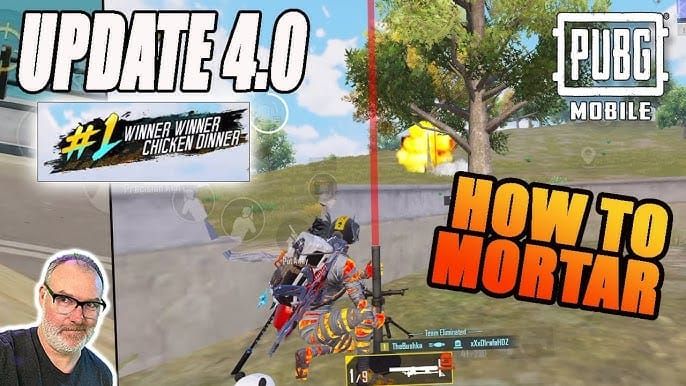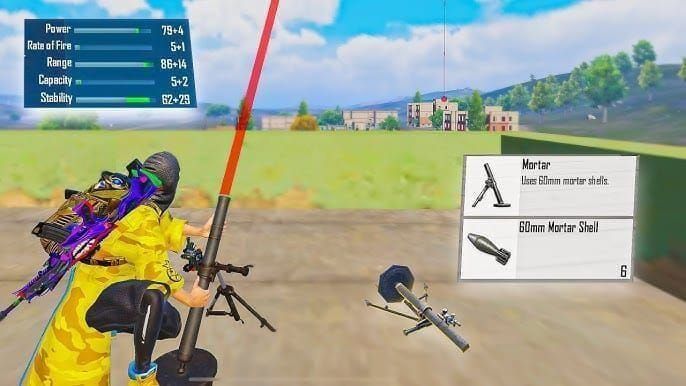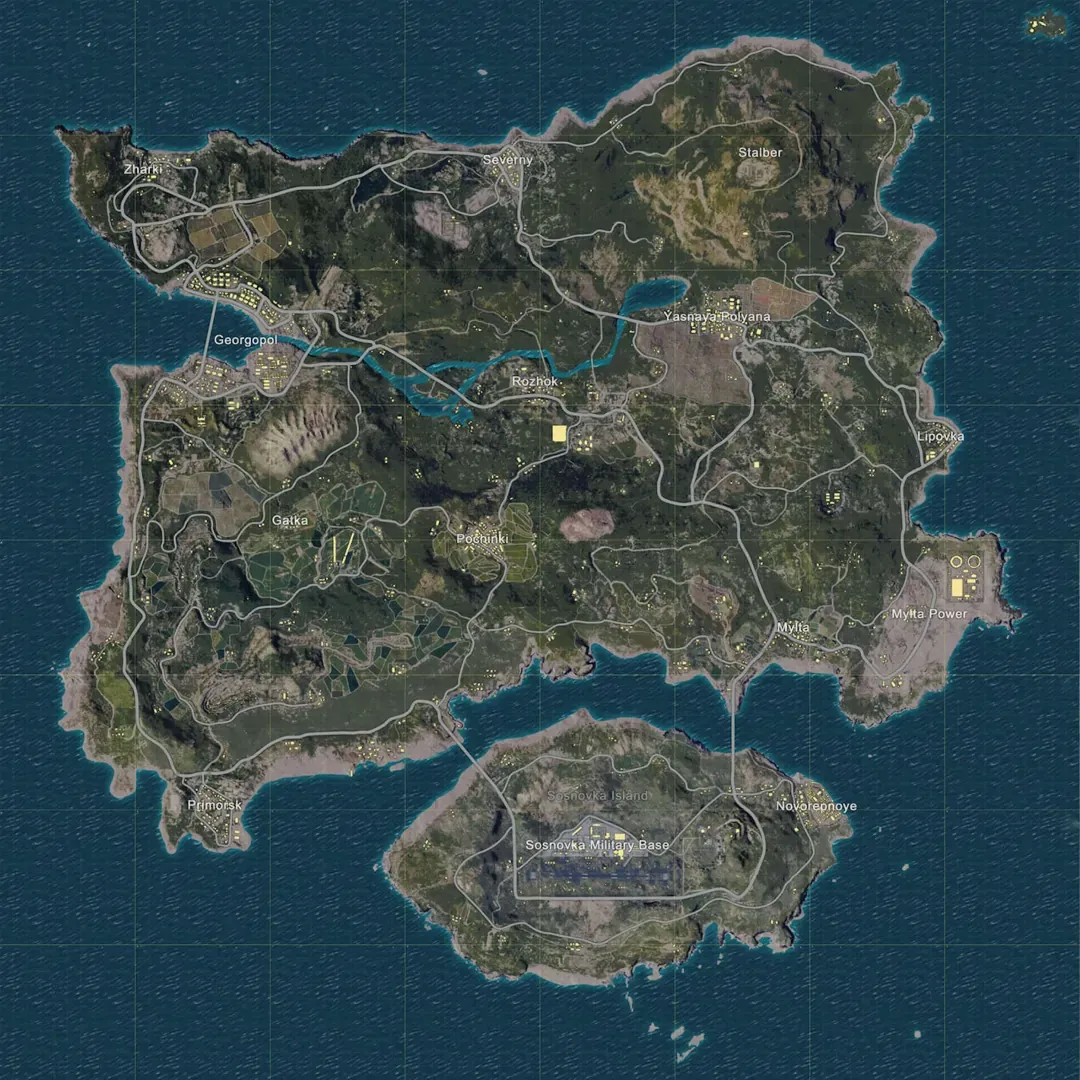Master perfect mortar and smoke grenade timing in PUBG Mobile 4.0 to break compounds safely without feeding enemies. This guide covers deployment sequences, timing windows, anti-feeding techniques, and team coordination for the new mortar weapon introduced September 4, 2025.
Understanding Mortar + Smoke Synergy in PUBG Mobile 4.0
Here's the thing about PUBG Mobile's Version 4.0 (dropped September 4, 2025) – that new mortar weapon completely changed how we approach compound breaking. And honestly? It's about time.
The mortar sits in your pistol slot with a 5-10 second strike delay for map-targeted attacks. Perfect timing window when you sync it with smoke grenades lasting 20-30 seconds. Two firing modes: direct line-of-sight for targets you can see, and map-targeted strikes for indirect fire on marked locations.

That map-targeted mode? Game changer. You can coordinate precise timing with smoke grenades to break fortified compounds without exposing yourself like a sitting duck. Smoke grenades create dense coverage that obscures enemy sight lines during mortar flight time. Here's your sequence: deploy smoke with a 2-3 second cook time, immediately follow with mortar map-targeting. Boom – coordinated assault with explosive strikes landing right within your smoke coverage period.

When players need to top up PUBG Mobile UC online, BitTopup provides instant delivery with competitive pricing and secure transactions, ensuring resources for advanced tactical gameplay.
Essential Setup and Preparation
Your optimal team comp? One mortar operator, one smoke support, two entry specialists. Don't overthink it.

You'll want 3-4 smoke grenades distributed across team members – that 8-10 grenade carry limit gives you multiple assault attempts if things go sideways (and they will). Your mortar operator needs elevated or covered positioning 50-100 meters from target compounds. Not negotiable.
Pre-attack positioning is where most teams screw up. You need stable ground for mortar deployment outside enemy line-of-sight. Look for natural cover – rocks, trees, terrain elevation that'll protect your deployment process. Remember: mortars become stationary once placed. Your initial positioning is permanent for each assault phase, so choose wisely.
Communication protocols matter more than you think. Standardized phrases work: smoke out, mortar targeting, strike incoming for that crucial 5-10 second execution window. Practice these sequences in training grounds using the three difficulty levels for grenade timing development. Trust me on this one.
Perfect Timing Execution Guide
Here's where the magic happens. Your timing sequence goes like this: smoke operator calls smoke out and releases that cooked grenade (2 seconds for targets within 20 meters). Simultaneously – and I mean simultaneously – mortar operator switches to map-targeted mode and marks the strike location within your anticipated smoke coverage area.
That 5-10 second mortar flight time aligns perfectly with smoke deployment for strikes during peak vision obstruction. Your entry team advances under smoke cover while staying aware of incoming mortar strikes. Position outside the explosive radius but close enough to capitalize on that area denial effect.
The 20-30 second smoke duration provides multiple strike opportunities if your initial attempts need adjustment. Which they probably will.
For secure PUBG UC checkout, BitTopup offers 24/7 customer support and instant delivery, ensuring accounts stay stocked with essential resources without interrupting tactical practice sessions.
Pro tip: use that free look function (eye button) to preview landing spots from hidden angles. Allows precise smoke placement through windows or over compound walls while maintaining cover.
Compound Breaking Strategies
Target multi-story buildings with single entry points – mortar strikes deny upper-floor advantages while smoke obscures ground-level approaches. Erangel's updated Lipovka area provides excellent practice opportunities (seriously, spend time there).

Focus on areas where smoke coverage simultaneously blocks defender vision and provides concealment for advancing teammates. It's a two-for-one deal.
Your breach execution follows three phases:
Phase 1: smoke deployment and mortar targeting from safe positions
Phase 2: coordinated advancement under smoke cover while monitoring incoming strike
Phase 3: immediate entry and area control before defenders reposition
Single-story compounds require 2-3 second timing windows. Multi-story buildings allow extended sequences with multiple smoke deployments and successive mortar strikes clearing different levels systematically.
Anti-Feeding Techniques
Let's talk about not becoming someone else's highlight reel.
Use lean mechanics to deploy smoke grenades while keeping your body hidden behind walls – extend only your throwing hand through wall cracks or corners. Go prone before pulling grenade pins, combine with free look for accurate trajectory preview while reducing your profile.
Common feeding scenarios that'll get you killed: premature exposure during mortar setup, advancing before adequate smoke coverage, failing to account for third-party teams attracted by explosive sounds. That last one's a killer – literally.
Maintain situational awareness. Establish overwatch positions monitoring surrounding areas. Set up fallback positions before initiating attacks, maintain escape routes avoiding open ground crossings, designate team members for rear security.
That 5-10 second mortar delay? It provides enemies counter-attack opportunities if your positioning lacks adequate cover.
Map-Specific Applications
Erangel's School, Military Base, and Pochinki offer diverse compound types requiring different timing approaches. School's multi-building complex benefits from successive strikes. Military Base's open approaches demand precise smoke placement to avoid sniper fire during setup.

Sanhok's dense vegetation provides natural concealment but requires careful positioning – avoid tree interference with map-targeted strikes. The compact map size reduces flight times, requiring 3-5 second windows instead of standard 5-10 second timing.
Miramar's open terrain creates longer engagement distances, making mortar positioning easier but smoke placement more critical. Desert compounds lack natural cover approaches, making vision-blocking essential. You'll need extended cook times of 3-4 seconds for increased throwing distances.
Team Coordination and Communication
Your standardized callouts should be: Smoke ready indicates grenade preparation, smoke out signals deployment, mortar targeting confirms strike preparation, impact in 3-2-1 provides final timing for positioning adjustments.
Role synchronization matters: mortar operator focuses on targeting and timing, smoke support manages vision control and secondary utility deployment, entry specialists prepare for immediate compound penetration following strike.
Establish secondary smoke positions, alternative mortar deployment sites, and retreat routes while maintaining team cohesion. Single-carry limitation on mortars means losing your operator requires complete tactical adjustment. Plan accordingly.
Counter-Strategies and Defense
Recognize incoming attacks by identifying: smoke deployment near compound perimeters, distant mortar deployment sounds, coordinated team movements suggesting utility-based assault preparation. Early detection provides 5-10 seconds to reposition or prepare counter-measures.
Defensive positioning prioritizes mobility and cover diversity within compounds. Don't cluster in single rooms or predictable locations that become obvious mortar targets. Maintain multiple exit routes and establish overwatch positions monitoring approach angles during smoke coverage.
Deploy your own smoke grenades to extend vision obstruction beyond attackers' timing windows. Use frag grenades to deny entry points during assault. Coordinate defensive fire during mortar flight delay when attackers may be exposed.
FAQ
How long should I wait between smoke deployment and mortar targeting? Deploy simultaneously. Cook smoke 2-3 seconds, immediately switch to mortar map-targeting. That 5-10 second flight time aligns with smoke coverage.
What's the best mortar deployment position? Elevated/covered ground 50-100 meters from compounds. Ensure stable terrain and natural cover protecting against counter-fire.
How do I avoid feeding while breaking compounds? Use lean mechanics throwing smoke behind cover, go prone before pulling pins, maintain escape routes avoiding open ground.
Which compounds work best for mortar-smoke tactics? Multi-story buildings with limited escape routes. Erangel's School, Military Base, Pochinki provide ideal practice opportunities.
How has 4.0 update changed compound breaking? September 4, 2025 update introduced mortar as pistol-slot weapon with ground-deploy requirements and 5-10 second delays, creating new timing opportunities with smoke grenades.
What if initial assault fails? Establish backup positions before attacking, maintain secondary smoke options, prepare retreat routes preserving team cohesion.

